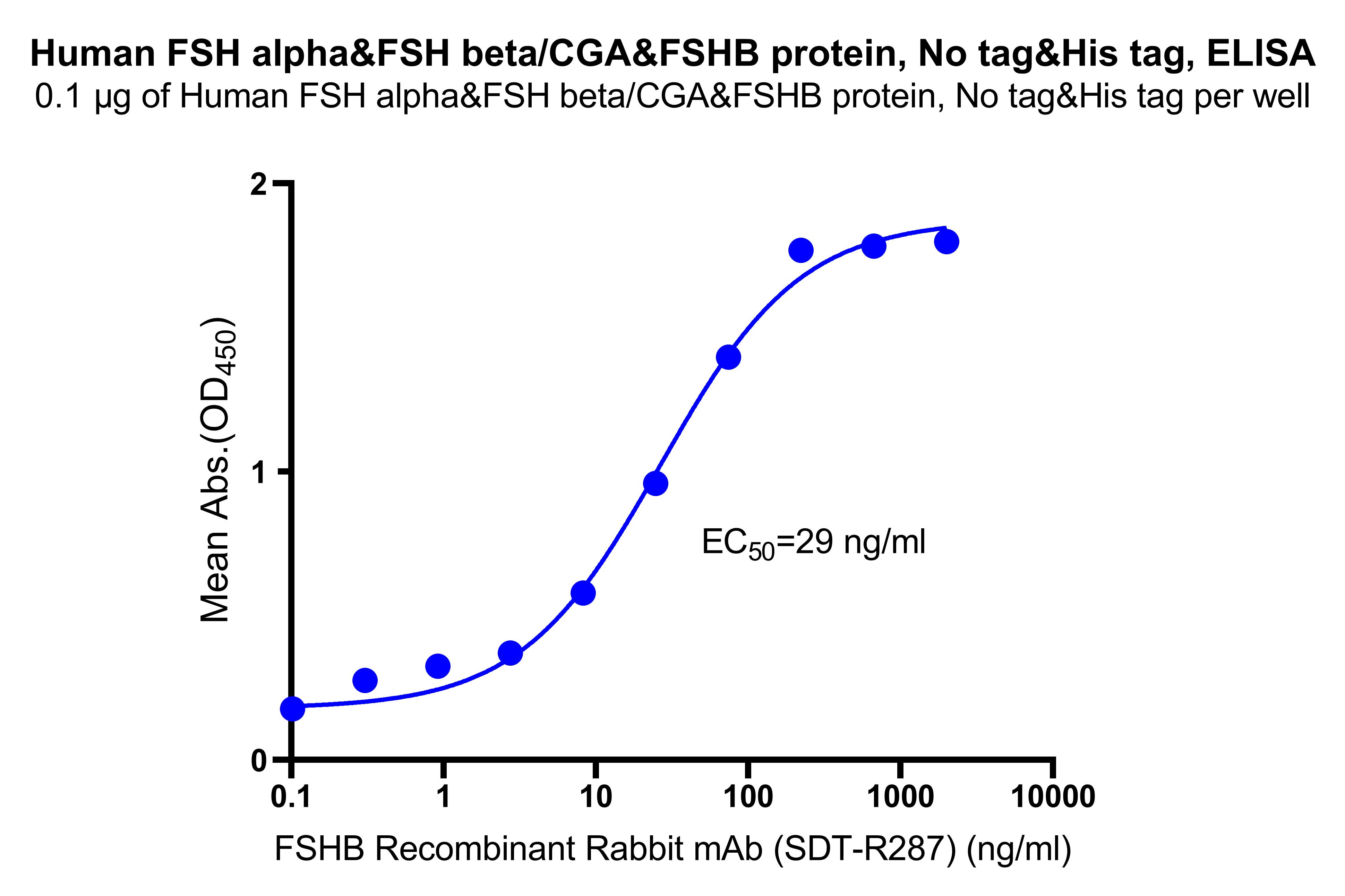Protein sequence1 (P01215, Ala25-Ser116) APDVQDCPECTLQENPFFSQPGAPILQCMGCCFSRAYPTPLRSKKTMLVQKNVTSESTCCVAKSYNRVTVMGGFKVENHTACHCSTCYYHKS;
Protein sequence2 (P01225, Asn19-Glu129, with C-His tag) NSCELTNITIAIEKEECRFCISINTTWCAGYCYTRDLVYKDPARPKIQKTCTFKELVYETVRVPGCAHHADSLYTYPVATQCHCGKCDSDSTDCTVRGLGPSYCSFGEMKE
Predicted MW: 10.2 kDa(CGA)&14.2 kDa(FSHB);Observed MW: 20-25 kDa
12 months from date of receipt, -20 to -70 °C as supplied.
6 months, -20 to -70 °C under sterile conditions after reconstitution.
1 week, 2 to 8 °C under sterile conditions after reconstitution.
Please avoid repeated freeze-thaw cycles.
Follicle-stimulating hormone (FSH) is a gonadotropin, a glycoprotein polypeptide hormone. FSH is synthesized and secreted by the gonadotropic cells of the anterior pituitary gland and regulates the development, growth, pubertal maturation, and reproductive processes of the body. FSH and luteinizing hormone (LH) work together in the reproductive system. FSH is a 35.5 kDa glycoprotein heterodimer, consisting of two polypeptide units, alpha and beta. The alpha subunits of the glycoproteins LH, FSH, TSH, and hCG are identical and consist of 96 amino acids, while the beta subunits vary. Both subunits are required for biological activity. FSH has a beta subunit of 111 amino acids (FSH β), which confers its specific biologic action, and is responsible for interaction with the follicle-stimulating hormone receptor. The sugar portion of the hormone is covalently bonded to asparagine, and is composed of N-acetylgalactosamine, mannose, N-acetylglucosamine, galactose, and sialic acid.

Immobilized Human FSH alpha&FSH beta/CGA&FSHB protein, No tag&His tag at 2 μg/mL (50 μL/well) can bind FSHB Recombinant Rabbit mAb (SDT-R287) (Cat. No. S0B2272) with EC50 of 22-38 ng/mL.
2 μg(R: reducing conditions; NR: non-reducing conditions)